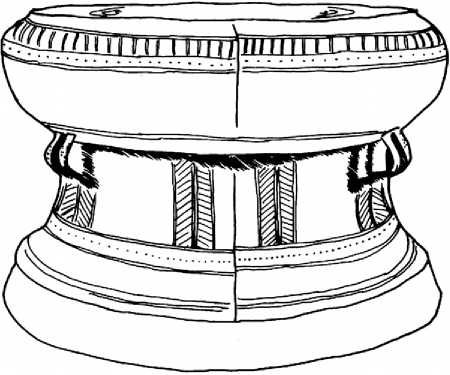Societies’ needs vary according to their economic bases and these in themselves are inextricably intertwined with their historical and social development. People who live near resource-rich coasts are likely (although not always) to make equipment to extract marine foods but which equipment they use to catch fish, for example, will depend on their other technologies (do they have a fiber technology needed to make nets?) and social decisions such as whether they want to catch large numbers of fish cooperatively with nets and traps or individually using spears or lines.
But, clearly there are factors other than economy that influence the diversity of artifacts over time and place. Even artifacts made at the same time and for the same purpose vary - just think about the variety of corkscrew designs. Some of this variety is linked to the fact that different raw materials behave in different ways and so the shape of the artifact is affected by the raw materials from which it is made. Other variations are the result of different design solutions for the same functions and style differences, such as decoration, that are not necessarily associated with the function of the artifact. Artistic tradition may also play a role in the design of objects, and the creative philosophy of the culture affects the variety of designs made. In summary, artifact diversity depends on the functions for which the makers intend the object to be used (which is in turn dependent on historical and social circumstance), the raw material with which the artifacts are made, the technology associated with production, and the styles chosen by the artifact makers.
Different raw materials have different physical properties that make them suitable for some designs and not others. An object made to contain water must be steep-sided to hold the water and should be made of relatively nonporous material. Which nonporous material the artisan selects then depends on what is available (and at what cost), their skill at manipulating different raw materials, and ultimately how they want the artifact to appear. All of these factors are affected by the social context in which the artifact is made. Social context affects raw material use because it dictates fashions and because it influences access to raw materials through internal politics and through political associations with neighbouring communities that might provide access to specific raw materials in their region.
Technology associated with production affects the final form of an object. There are some objects that can only be made when a particular technology is available but objects with the same function can be made using different technologies. A bottle can be made with glass, animal hide, or clay. A ceramic bowl can be shaped by hand, with a coil technique or by using a potters’ wheel. A potter’s decision about which technique to use will depend on not only the technology available but also on individual choice that will be influenced by their social situation.
Within societies, individuals and groups also affect how objects are made. If they are the makers themselves, how the object is made is influenced by such factors as economic circumstances (what materials they have access to) and how they want to be perceived by others. Do they want to express their status or association within a particular subgroup in a society? Is the artifact being made for themselves or are they making it for someone else? In modern industrial societies, changes in technology, design, and fashion are in the interests of manufacturers. But the essential social influences on artifact design have not changed much since the emergence of H. sapiens.
As in all human societies, the makers of objects are influenced by their teachers. Groups of people who interact frequently develop designs and ways of making objects that are characteristic of their own social circles. With the dispersal of people throughout the world, there are a great variety of approaches to the same technological problem but styles and motifs are often instantly recognizable. In addition to how artisans learn to make objects, there are circumstances in which they may choose to emphasize affiliations - for example, to demonstrate their belonging to a particular social group. Sometimes belonging might be expressed by the use of a particular kind of artifact. For example, the decorated bronze cast Dong Son drums of Southeast Asia (Figure 6) were first made probably in north Vietnam sometime before the sixth century BC and quickly spread (through local manufacture and trade) to south and southwest China, Burma, Thailand, Laos, and Indonesia. This dispersal in culturally different regions does not necessarily indicate that the drums were used for the same purpose but it does indicate a shared ideology between these disparate groups.
Sometimes a shared ideology is expressed in the ways that people make a variety of artifacts. For example, about 3000 years ago, Chavin, a distinctive art style originating at the site of Chavin de Huii ntar, spread across what had previously been highly regionalized valleys in what is now Peru. This style was apparent in many different types of artifacts in the region including pottery, sculpture, and textiles. The common style expressed a unification of disparate groups that made it possible to encourage trade between the various highland valleys.
There are also circumstances where people choose to emphasize difference. This may be expressed by groups of people deliberately choosing to produce one artifact rather than another or deliberately spurning artifacts used by other cultures. Consider, for example, the use of Christian crosses and Buddha statues.
With the advent of globalization, regional differences in artifacts are no longer as obvious. This is particularly so for industrialized countries where most people have access to the Internet and to material goods from all over the world. There seems to be an emphasis on unification between these countries.

Figure 6 Dong Son drum (height about 26cm).
In developing countries or isolated places, where this outside access is not readily available or where emphasis is placed on maintaining traditional customs, the cultural derivation of the artifacts is much more obvious.




 World History
World History









